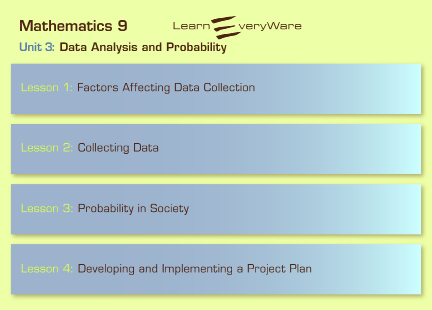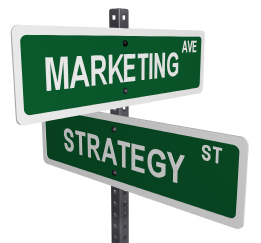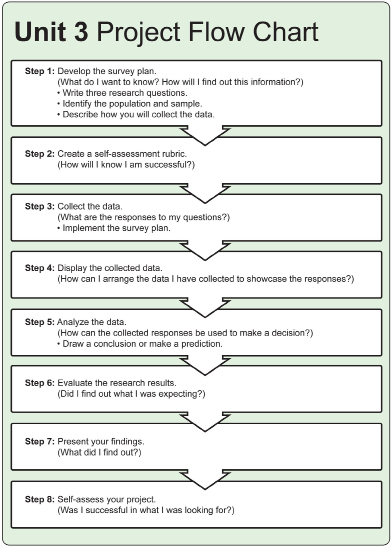Unit 3
Unit 3
Unit 3 Introduction
In Units 1 and 2 you identified and created visually appealing designs. This is only part of the process of product and logo development. Another major component of logo and product development is marketing research.
Companies use research to look at logo and product development from the consumers’ point of view. This allows them to determine how consumers might react to a new or revised item before it hits the shelves. Finding out what makes consumers happy is an important step in creating a successful logo or product.

© higyou/shutterstock
Marketing researchers design plans to collect data that is accurate and relevant. Throughout this unit you will look at how these plans are developed and carried out. You will also investigate factors that affect data collection.
In this unit you will investigate the following critical question:
- How can data be collected and analyzed in such a way as to provide relevant and valid information from which to make a decision?
The concepts and skills associated with data analysis and probability will be presented in four lessons.

Keep up to your assignments as you go through this unit. Keep your work organized, either electronically or in a paper version. This will help you to review and reference the lessons you have learned. Reviewing may help you on tests or while you are working on the unit project. Be sure to talk to your teacher about when and how to submit your assignments.
In this unit there are a variety of assignments you will be asked to complete. Some of these include the following:
- posting to the discussion board
- adding samples of your work to your Math 9 course folder
- developing a formula sheet
- completing sets of questions for each lesson
- completing a unit project
- completing evaluation pieces assigned by your teacher
Strategies for Success
In order to support your success in this unit, follow these strategies.
Strategy 1

Throughout this course you will build a formula sheet using a spreadsheet program. The purpose of this project is to produce a formula sheet that you can use to quickly identify specific formulas and their uses. It will also provide a way for discussion, analysis, and review of these formulas with your peers.
- The specific instructions and requirements for the formula sheet are provided to you in the Course Introduction.
-
Keep a look out for the formula sheet icon in the left-hand margin of the lesson you are working on. This is an indication that you can add that formula in your spreadsheet. You should have saved a copy of the Mathematics 9 Formula Sheet spreadsheet to your Math 9 course folder when you worked in Unit 1. If you haven’t done so yet, you can find the formula sheet in the Toolkit.
Strategy 2
Make a foldable study tool according to the detailed instructions on page 412 of your MathLinks 9 textbook. Although this activity may not be graded for marks, you will benefit from this tool. Keep these points in mind as you develop and use this study tool.
- Add formulas, diagrams, examples, key ideas, and glossary words as you work through the lessons.
- The foldable can serve as a quick reference guide and will help you save time when you are ready to study for your unit test.
Strategy 3
In this unit you will be referring to pages 410 to 449 of your textbook.
- Take time to flip through these textbook pages.
- Look at illustrations, margin features, and main titles to get a sense of where you will be going.
Strategy 4
Read your lessons and textbook materials carefully.
- Pay special attention to tables and diagrams. They have information that will help you understand what you are reading.
- Read and reread material. Take time to ensure you understand it.
- Ask yourself: What is new material to me? What do I already know?
- Move ahead with confidence.
Unit 3 Project
This project is a continuation of the project work you completed in Units 1 and 2. As with the Unit 1 and Unit 2 Projects, you may work individually, with a partner, or in a group setting. Ask your teacher about the possibility of working with a partner or a team.
The purpose of this project is to conduct marketing research to determine which of your two logo designs consumers prefer.
The project consists of writing research questions and choosing a method for data collection. You will develop and then implement the plan. The data will be displayed to communicate the responses. Analysis of the data will help predict which logo you will choose. Finally, a decision will be made that identifies the preferred logo. This logo would be used in the marketing strategy for your product.

© TerryM/shutterstock
The following flow chart gives an overview of the project components. Use the flow chart to help organize your project and develop your plan. You may not be familiar with some of the terms used in the flow chart now, but as you work through the lessons, the terms will become clear.

As you progress through each lesson, think about how the information presented can be incorporated into your project plan. Keep track of your thoughts in your portfolio. This will keep your work organized and available for when it is needed.
It is also important to keep in mind that you will be using your designs created in Unit 1 and Unit 2 in the Unit 3 project. Keep your portfolio handy. You will need to incorporate your logo designs into your project plan.
You will be creating your own self-assessment rubric for the Unit 3 Project. As you work through the project components, consider what criteria you will use to assess the project. Think about what indicators reflect project work that falls into each of the following categories:
- exceeds expectations
- meets all of the expectations
- meets the minimum standards
- shows little or no evidence of expected results

The better you understand what the characteristics of quality work are for the project, the easier it will be for you to create high-quality work. Remember, you can always discuss your project with your teacher if you have questions or if you are unclear about a piece of the project.
Let’s get started! The first step in a successful marketing research plan is making sure you are asking the right questions.